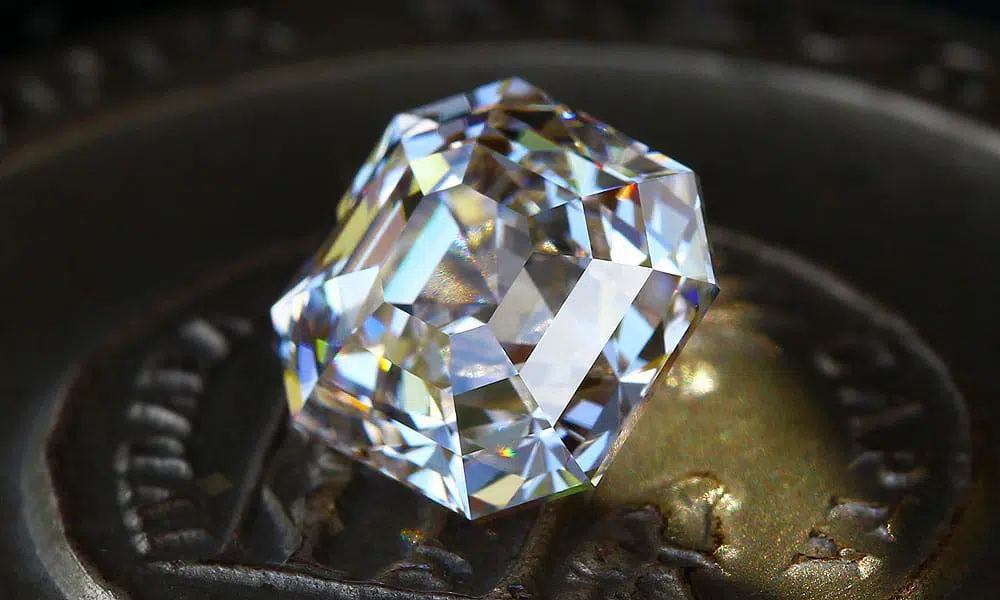Table of Contents
Introduction to Diamond Shapes and Cuts
When it comes to diamonds, two important factors contribute to their beauty and value: their shapes and cuts. Understanding these aspects is essential when choosing a diamond, whether for an engagement ring or another piece of jewelry. With the rise of lab-made diamonds, these factors have become more accessible and affordable for consumers. In this article, we’ll explore the various diamond shapes and cuts, particularly in the context of lab-made diamonds, and how they contribute to the overall appeal of a diamond.
What Are Diamond Shapes and Cuts?
Diamond shapes refer to the physical form of the diamond, such as round, square, or oval. Each shape affects how light reflects off the surface of the stone and, consequently, its sparkle and brilliance. On the other hand, diamond cuts are about the facets and how they are shaped and arranged on the stone. A well-cut diamond, regardless of shape, will sparkle more intensely due to its optimal light reflection. Both shapes and cuts play a significant role in the appearance of a diamond.
Diamond Shapes: Exploring the Variety
When it comes to diamond shapes, lab-made diamonds offer the same variety as natural diamonds. The most popular diamond shape is the round brilliant, renowned for its superior light performance. Its many facets help create incredible sparkle, making it an ideal choice for engagement rings. Other common shapes include princess, cushion, emerald, and oval. Each shape has its own distinct look, and the choice depends on personal preference and the setting in which the diamond will be placed.
In the case of lab-made diamonds, these shapes are crafted with the same precision and quality as natural diamonds. The key difference is the origin of the diamond. Lab-made diamonds are grown in a controlled environment, using advanced technology that replicates the natural diamond-growing process. As a result, these diamonds exhibit the same physical properties as their mined counterparts, including hardness and brilliance.
How Diamond Cuts Influence a Diamond’s Appeal
The cut of a diamond is one of the most important aspects when determining its beauty and value. Unlike diamond shapes, which are a reflection of the stone’s physical form, the cut is about how the diamond is shaped and faceted. A well-cut diamond allows light to pass through it and reflect in dazzling ways. The better the cut, the more brilliance the diamond will have.
In lab-made diamonds, cutting is done with precision, often using cutting-edge technology and expertise to achieve the most stunning result. lab made diamonds are not only available in traditional cuts but also in unique and modern designs, offering more options for consumers. Whether you choose a round brilliant cut or a princess cut, the way the diamond is cut will affect its visual appeal.
The Difference Between Lab-Made Diamonds and Natural Diamonds
A significant consideration when buying a diamond is whether it is natural or lab-made. Lab-made diamonds are identical in physical properties to natural diamonds, including their hardness, sparkle, and brilliance. The main difference lies in their origin. Natural diamonds are formed deep within the Earth’s crust over millions of years, while lab-made diamonds are created in a matter of weeks or months in controlled environments.
This difference in origin does not impact the diamond’s beauty or quality. Lab-made diamonds are available in the same range of shapes and cuts as natural diamonds, meaning you can enjoy all the beauty and luxury of a traditional diamond at a more affordable price. Furthermore, the use of advanced technology ensures that lab-made diamonds are cut to perfection, providing an optimal balance between diamond shape and brilliance.
Choosing the Right Diamond Shape and Cut for You
When choosing a diamond, whether natural or lab-made, the shape and cut are crucial decisions that will influence the overall look and feel of the piece. For example, if you prefer a more classic and timeless style, a round brilliant cut might be the best option. If you prefer something with a bit more edge, a princess cut or emerald cut might suit your taste.
The cut of the diamond should also be considered carefully. Even a diamond with a stunning shape can appear dull if the cut is poor. On the other hand, a well-cut lab-made diamond will sparkle brightly, no matter the shape. It’s essential to consider both factors when selecting a diamond to ensure that the final piece is one that truly captures your preferences.
The Advantages of Lab-Made Diamonds in Shape and Cut
Lab-made diamonds offer several advantages over natural diamonds, especially when it comes to shape and cut. First and foremost, lab-made diamonds are often more affordable, making it easier to invest in a larger or higher-quality diamond. The precision and technology used in creating lab-made diamonds allow for more intricate and unique cuts, offering consumers a wider range of options.
Additionally, lab-made diamonds are environmentally friendly, with less impact on the Earth’s resources compared to mined diamonds. They are also free from ethical concerns that might be associated with diamond mining practices. For those seeking the perfect diamond shape and cut without compromising on quality or ethics, lab-made diamonds provide an excellent choice.
Conclusion
In conclusion, understanding diamond shapes and cuts is essential for making an informed decision when purchasing a diamond. Whether you’re interested in a traditional round brilliant cut or a more modern cushion shape, the cut of a diamond significantly impacts its brilliance and overall appeal. Lab-made diamonds, with their advanced technology and precision, offer the same variety of shapes and cuts as natural diamonds but at a more affordable and ethical price point. By carefully considering the diamond shape and cut, you can choose the perfect lab-made diamond that meets your needs and personal style.

